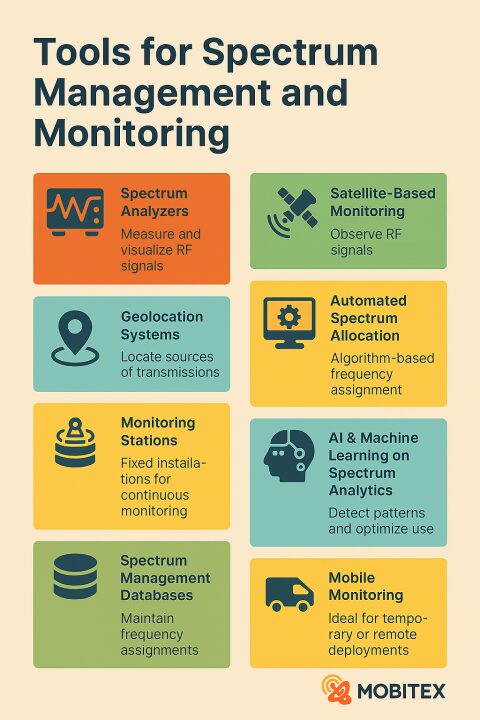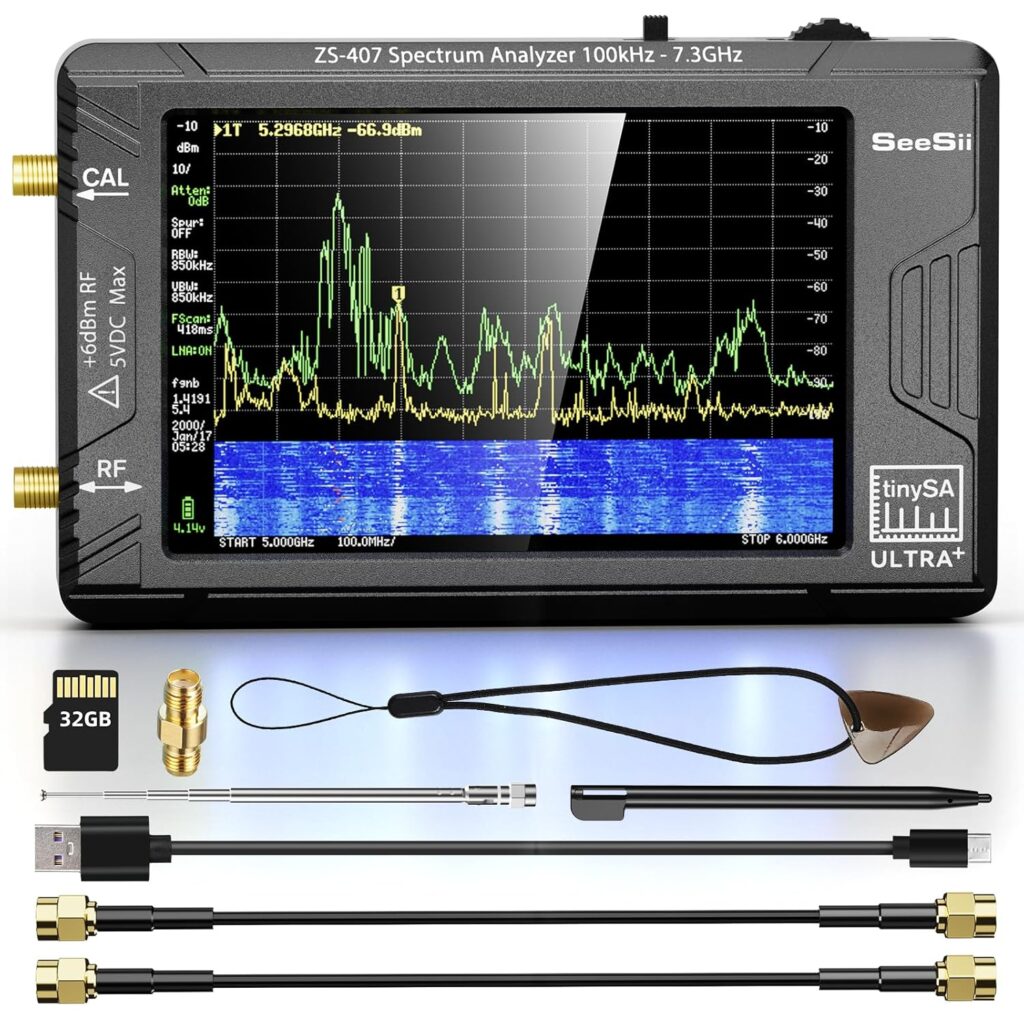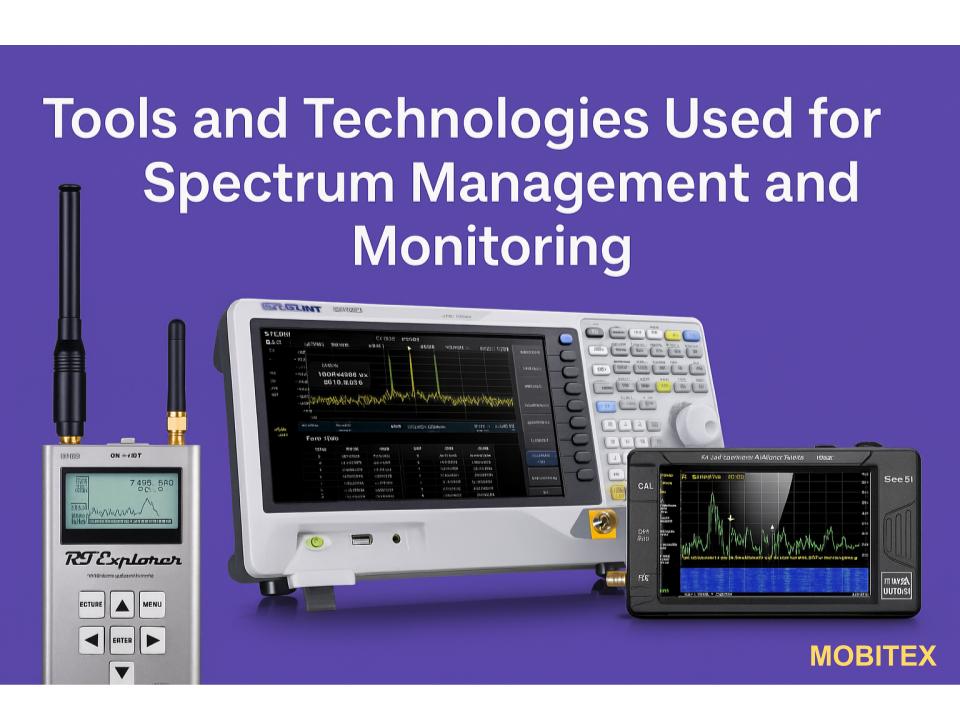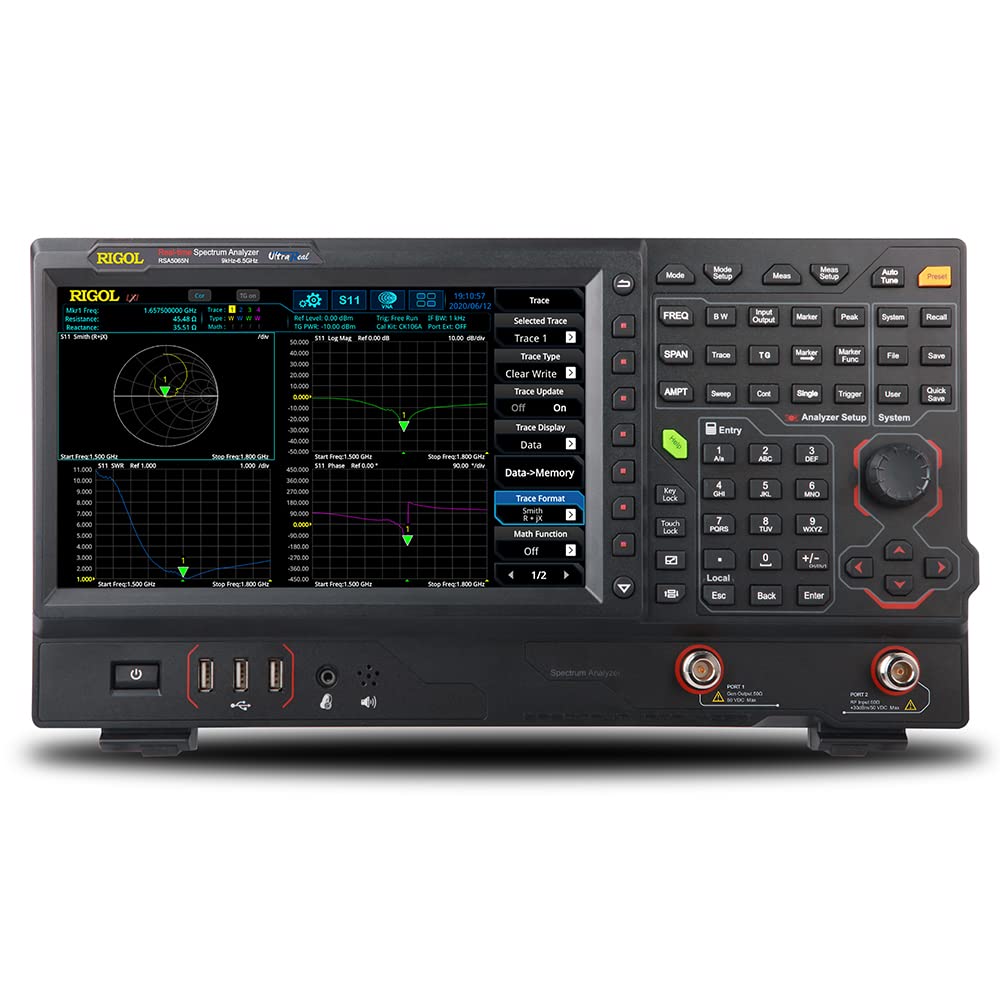This article contains affiliate links and is a member of the Amazon Services LLC Associates Program. If you make a purchase using one of these links, we may receive compensation at no extra cost to you. This helps support our research, testing and writing.
📡 As global demand for wireless connectivity surges, managing the radio frequency spectrum has become a critical task for governments, regulators, network operators, and enterprises. Efficient spectrum management ensures fair use, prevents interference, and fosters innovation across services like cellular, satellite, broadcasting, and IoT.
This article explores the key tools and technologies used to monitor, allocate, and manage the RF spectrum – providing engineering-grade insights into how modern spectrum ecosystems are governed.
🛠️ What Is Spectrum Management?
Spectrum management refers to the administrative and technical processes involved in regulating and optimizing the use of radio frequencies. It involves:
- Allocating spectrum for different services (e.g., aviation, military, cellular)
- Authorizing users via licenses or exemptions
- Monitoring for unauthorized or interfering signals
- Enforcing regulations and preventing harmful interference
HackRF Software-Defined Radio is a comprehensive and cost-effective hardware platform for Spectrum Monitoring
🔧 Core Tools for Spectrum Monitoring
🎛️ Spectrum Analyzers
- Measure and visualize RF signals in real time
- Help identify interference, signal strength, spurious emissions
- Used in fixed, mobile, and portable deployments
- Vendors: Rigol, Siglent, TinySA, HackRF (software-defined Radio Based Spectrum Analyzer)
RIGOL RSA5032N – 3.2 GHz Real Time Spectrum Analyzer with Vector Network Analysis
🌐 Geolocation Systems
- Triangulate the source of transmissions using Time Difference of Arrival (TDOA) or Angle of Arrival (AOA)
- Useful for detecting rogue transmitters or jammers

📡 Monitoring Stations
- Fixed installations with wideband antennas and RF front ends
- Continuously monitor spectrum usage over large areas
- Often part of national monitoring networks
🛰️ Satellite-Based Monitoring
- Used for high-altitude or remote spectrum observation
- Provides broad-area coverage of signals from space
- Useful in maritime, aviation, and disaster zones

TinySA Spectrum Analyzer, 100 kHz-7.3 GHz – A revolutionary tool for Spectrum Monitoring in the Field
⚙️ Spectrum Management Technologies
🗺️ Spectrum Management Databases
- Maintain frequency assignments and license records
- Enable coordination and conflict avoidance
- Examples: NTIA (USA), CEPT EFIS (Europe), ITU BR IFIC
📊 Automated Spectrum Allocation Systems
- Algorithms optimize frequency assignments based on current use
- Reduce human error and increase efficiency
- Essential for dynamic spectrum access and cognitive radio networks
🤖 AI & Machine Learning for Spectrum Analytics
- Detect usage patterns, predict interference, optimize frequency reuse
- Enhance spectrum sensing in shared and unlicensed bands
🌐 Dynamic Spectrum Access (DSA) Tools
- Support technologies like CBRS (Citizens Broadband Radio Service) using SAS (Spectrum Access Systems)
- Enable shared use without harmful interference
🧪 Specialized Tools
| Tool Type | Description | Use Cases |
|---|---|---|
| Direction Finding (DF) | Locates source of RF emissions using antenna arrays | Interference hunting, military |
| Signal Classification | Identifies modulation, protocol, and source type | Monitoring spectrum occupancy |
| Spectrum Occupancy Meters | Track usage statistics over time | Trend analysis, planning |
| Waterfall Displays | Visualize frequency vs. time for persistent signals | Detecting intermittent interference |
🌍 Key Regulatory Platforms
- ITU GMDSS and BR IFIC – Global coordination and frequency information
- FCC ULS (USA) – License management and lookup
- Ofcom Wireless Telegraphy Register (UK) – Public license database
- CEPT ECO EFIS – European spectrum inventory and planning tool
🏢 Organizations and Stakeholders
- National Regulators: FCC (USA), Ofcom (UK), ACMA (Australia), Anatel (Brazil)
- International Bodies: ITU-R, CEPT, CITEL, APT
- Private Sector: Cellular operators, broadcast networks, satellite providers
- Defense Agencies: Use specialized encrypted tools for tactical spectrum control
📶 Mobile and Remote Spectrum Monitoring
- Deployed via mobile vans, drones, or portable receivers
- Allow in-field spectrum analysis and interference resolution
- Ideal for temporary events, border areas, and emergency zones
🔄 Challenges and Trends
- Spectrum Scarcity: Growing demand for wireless bandwidth
- Interference Mitigation: Especially in shared/unlicensed bands
- Cross-Border Coordination: Essential near national boundaries
- Reallocation for 5G/6G: Refarming bands previously used by TV or military
🔍 The Role of Mobitex
At Mobitex, we equip engineers, regulators, and innovators with tools, maps, data, and consulting to:
- Analyze band usage across ITU Regions 1, 2, and 3
- Visualize global and adjacent spectrum allocations
- Track changes in regulatory trends and interference hotspots
- Decode wireless environments for RF planning, licensing, and compliance
✅ Summary
Efficient spectrum management is critical to ensuring that wireless systems operate reliably, legally, and cooperatively. From legacy analog radios to cutting-edge AI-enhanced analyzers, the toolkit for spectrum professionals is vast and evolving. As the wireless landscape becomes more complex, real-time monitoring and intelligent management tools will be indispensable for global connectivity.




